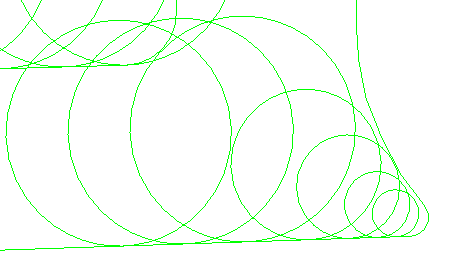Trochoidal moves are important when working with solid carbide tools where you are cutting on the side rather than the tip of the tools. These tools run at high speed and work best when taking deep cuts with a small stepover. This means the tool has only a small angle of engagement. As soon as the angle of engagement increases, the risk of tool damage increases. To minimize tool damage minimise the angle of engagement. You can do this in two ways:
- Avoid sharp corners.
- Avoid full-width cuts, or even cuts with a large angle of engagement which cause excessive tool loading.
There are different mechanisms to avoid sharp corners and tool overload. For example, using this model:
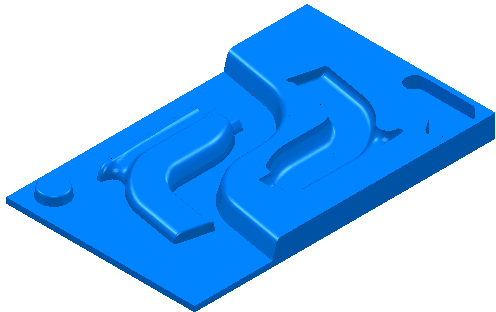
Creating a Model Area Clearance toolpath on this model using a Style of Offset Model. On the High Speed page:
Profile smoothing — deselected
Raceline smoothing — deselected
Trochoidal moves — deselected
Links — Straight
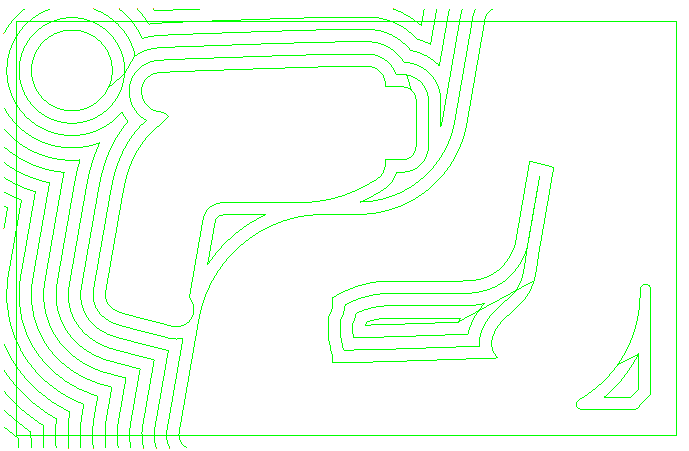
There are various problems with this toolpath, especially if you are high speed machining, when you try to avoid sudden changes in tool direction:
- The links from one offset to the next are perpendicular. This leads to a sudden change in tool direction.
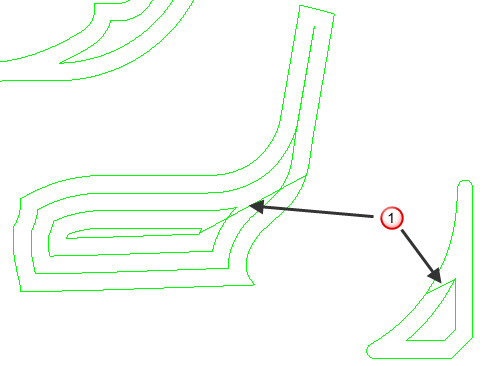
 — Sharp links
— Sharp links - There are too many sharp corners.

 — Sharp corners
— Sharp corners - There are too many full-width cuts.
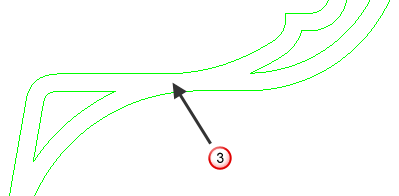
 — Full-width cuts
— Full-width cuts
Options to control all these are available on the High Speed page of the Model Area Clearance page.
On the High Speed page:
Profile smoothing — selected
Raceline smoothing — deselected
Trochoidal moves — deselected
Links — Smooth
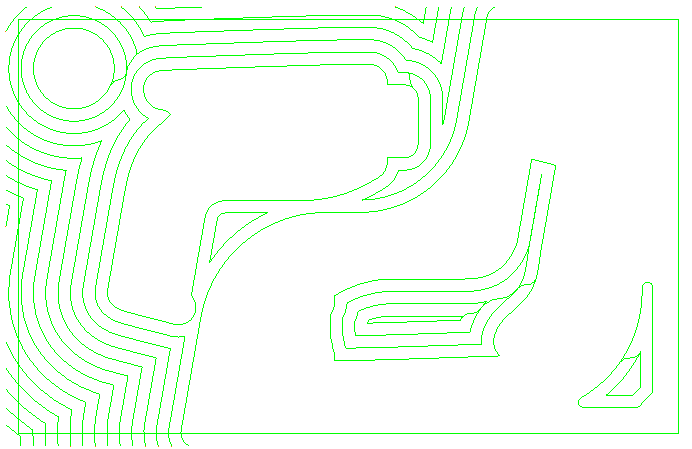
Looking in detail:
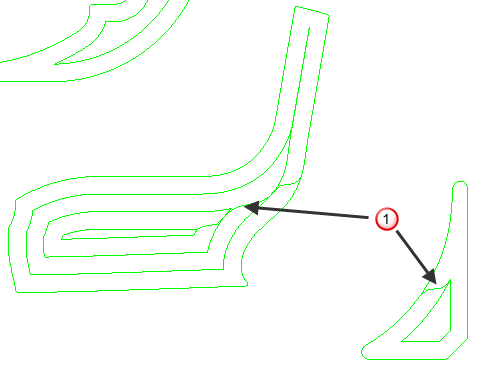
 — Smooth links
— Smooth links
On the High Speed page:
Profile smoothing — selected
Raceline smoothing — selected
Trochoidal moves — deselected
Links — Smooth
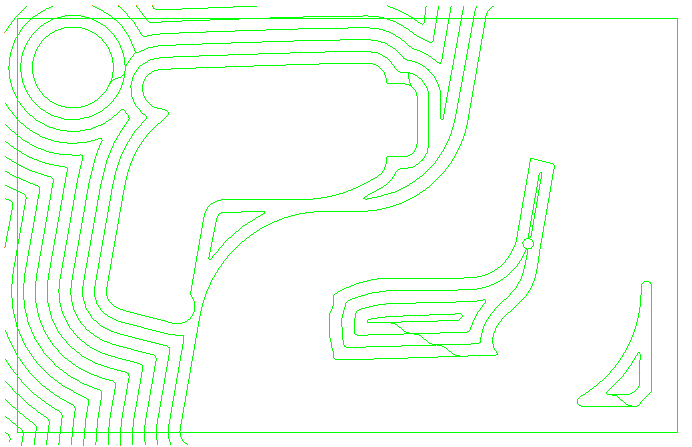
Looking in detail:
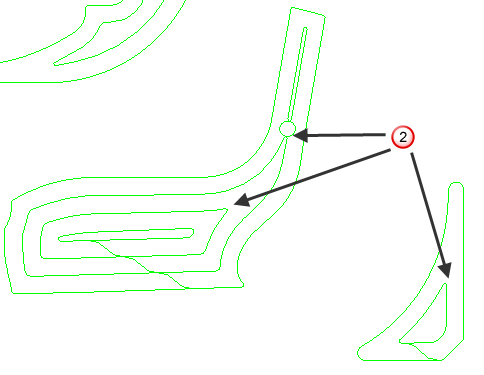
 — Smooth corners
— Smooth corners
On the High Speed page:
Profile smoothing — selected
Raceline smoothing — selected
Trochoidal moves — selected
Maximum overload of 10%
Links — Smooth
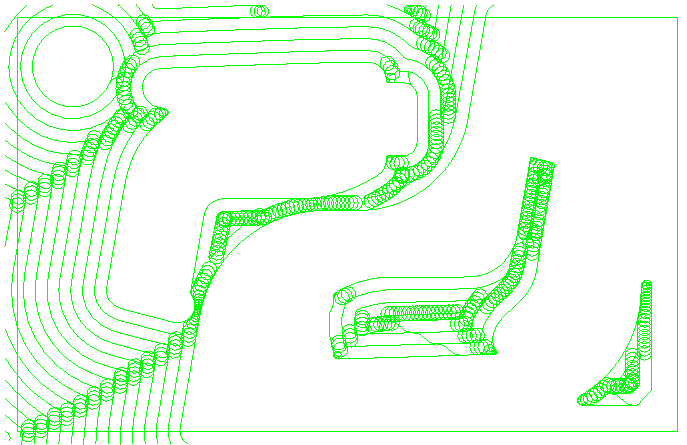
When the tool approaches overload, a trochoidal path is inserted to avoid the overload.
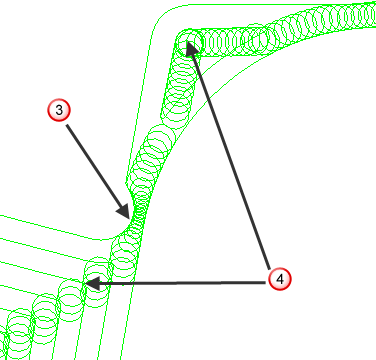
 — Narrow channel
— Narrow channel
 — Sharp corner
— Sharp corner
Looking in at a corner in even more detail, you can see the trochoidal path more easily:
